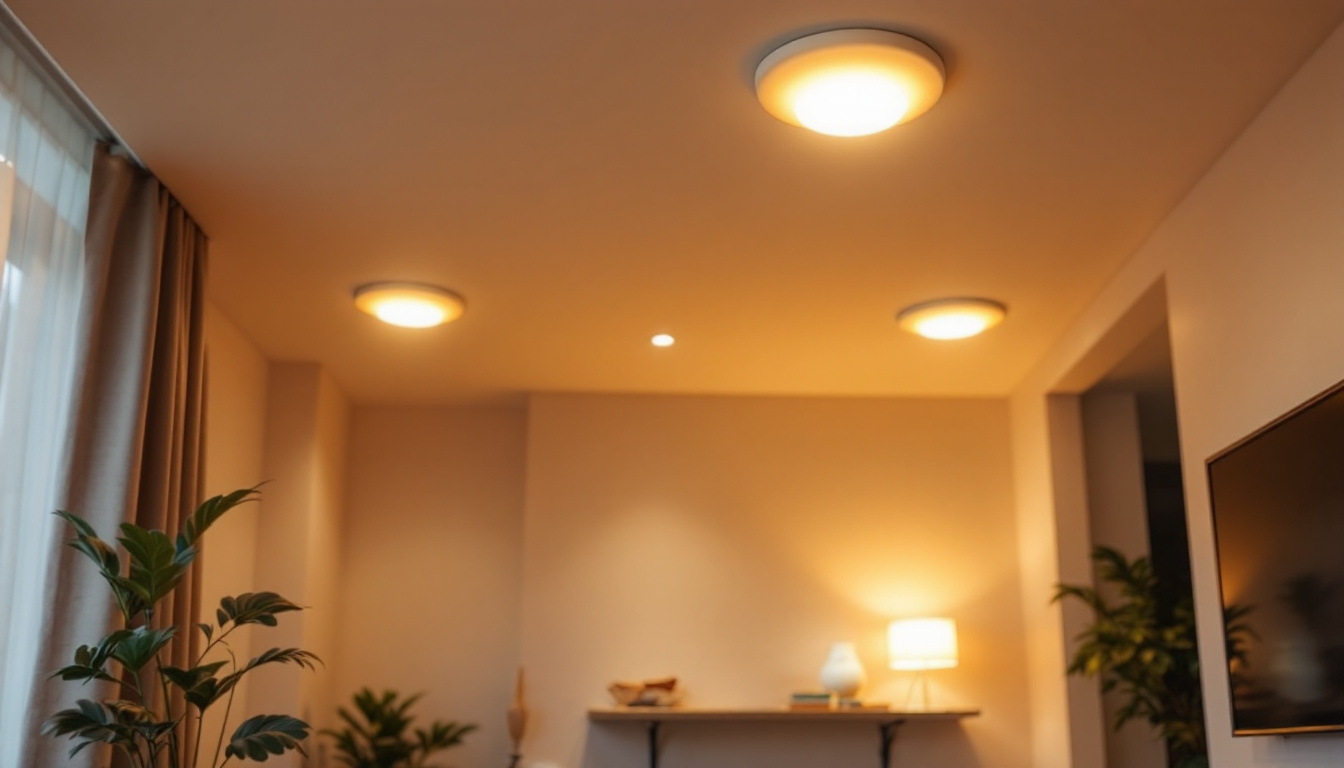

In the world of construction and maintenance, work lights play a crucial role in ensuring safety and productivity. Among the various types of work lights available, LED work lights have gained significant popularity due to their energy efficiency, longevity, and superior brightness. However, despite their advantages, many lighting contractors make common mistakes when selecting and using LED work lights. This guide aims to highlight these pitfalls and provide insights on how to avoid them.
One of the key benefits of LED work lights is their ability to produce high-quality illumination without generating excessive heat. This feature is particularly important in environments where heat can pose a risk to both equipment and personnel. Unlike traditional halogen lights, which can become dangerously hot and may even cause burns or fires, LED lights remain cool to the touch, allowing for safer handling and placement. Moreover, their durability means they can withstand the rigors of job sites, from rough handling to exposure to dust and moisture, making them a reliable choice for outdoor and indoor projects alike.
Another advantage of LED work lights is their versatility. Available in various designs, including portable, rechargeable, and fixed installations, they can be adapted to suit a multitude of tasks. For instance, portable LED work lights are ideal for contractors who need to move around frequently, while fixed installations can provide consistent lighting for longer-term projects. Additionally, many modern LED work lights come equipped with features such as adjustable brightness levels and color temperature settings, allowing users to customize their lighting conditions to enhance visibility and comfort. Understanding these features can significantly improve the effectiveness of work lights on the job site, ensuring that tasks are completed efficiently and safely.
Before diving into the common mistakes, it is essential to understand the technology behind LED work lights. LED, or Light Emitting Diode, is a semiconductor device that emits light when an electric current passes through it. This technology has revolutionized the lighting industry, offering benefits such as reduced energy consumption and lower heat output compared to traditional lighting options.
LED work lights provide numerous advantages that make them an ideal choice for contractors. Firstly, their energy efficiency translates to lower electricity bills, which is particularly important for long-term projects. Secondly, LEDs have a longer lifespan, often lasting tens of thousands of hours, reducing the frequency of replacements. Finally, their compact size and lightweight nature make them easy to transport and set up on job sites.
Despite the benefits, some misconceptions persist about LED work lights. One common myth is that LED lights are too expensive upfront. While the initial investment may be higher than traditional options, the long-term savings on energy and maintenance often outweigh the costs. Additionally, some contractors believe that all LED lights are created equal, failing to recognize the differences in quality and performance among various products.
With a foundational understanding of LED technology, it’s time to explore the common mistakes that lighting contractors often make when selecting and utilizing LED work lights. Avoiding these pitfalls can lead to better lighting solutions and enhanced project outcomes.
One of the most significant mistakes contractors make is overlooking the importance of lumens and color temperature when selecting LED work lights. Lumens measure the total amount of visible light emitted by a source, while color temperature, measured in Kelvin, describes the light’s appearance. Choosing the wrong lumens can result in insufficient lighting for the task at hand, while an inappropriate color temperature can affect visibility and comfort.
For example, a work light with too few lumens may leave dark spots in a workspace, leading to accidents and decreased productivity. On the other hand, lights with a color temperature that is too cool can create an uninviting atmosphere, making it challenging for workers to focus. It is essential to match the lumens and color temperature to the specific needs of the job site.
Construction sites can be harsh environments, and work lights need to withstand various conditions, including dust, moisture, and impacts. Many contractors make the mistake of choosing LED work lights based solely on brightness, neglecting to consider the durability of the fixtures. Selecting lights that are not rated for tough conditions can lead to premature failure and increased costs due to replacements.
When choosing LED work lights, look for products with high IP (Ingress Protection) ratings, which indicate their resistance to dust and water. Additionally, consider lights with rugged housing materials that can withstand physical impacts. Investing in durable work lights will pay off in the long run by reducing downtime and maintenance costs.
Another common error is failing to consider the power source of LED work lights. Many contractors default to plug-in models without exploring the benefits of battery-operated or hybrid options. While plug-in lights are suitable for stationary setups, battery-operated lights offer flexibility and mobility, allowing for easy relocation as work progresses.
Battery-operated LED work lights are particularly advantageous for outdoor projects or areas without easy access to power outlets. However, it is crucial to assess the battery life and charging time to ensure that the lights can meet the demands of the job. Hybrid options that can operate on both battery and AC power provide the best of both worlds, offering versatility and convenience.
With an understanding of common mistakes, the next step is to focus on how to choose the right LED work lights for various applications. The selection process involves evaluating specific needs, understanding the environment, and considering the type of work being performed.
The work environment plays a significant role in determining the type of LED work lights needed. For indoor projects, a softer light with a warm color temperature may be suitable, while outdoor projects may require brighter lights with cooler temperatures. Additionally, consider factors such as the size of the area to be illuminated and the presence of reflective surfaces that may affect lighting effectiveness.
For example, large outdoor construction sites may benefit from high-lumen floodlights that can cover extensive areas, while smaller indoor spaces may only require portable work lights. Understanding the unique characteristics of the work environment will help in selecting the most effective lighting solution.
Light distribution is another critical factor to consider when selecting LED work lights. Different fixtures offer various beam angles, which can significantly impact how light is spread across a workspace. A narrow beam angle may be suitable for focused tasks, while a wider beam angle can provide general illumination for larger areas.
Contractors should evaluate the specific tasks being performed and choose lights that provide the appropriate light distribution. Utilizing adjustable or multi-directional lights can also enhance flexibility, allowing for better coverage as work conditions change.
While LED work lights are generally more energy-efficient than traditional lighting options, there are still variations in efficiency among different models. Contractors should compare the wattage and lumens output to determine the most energy-efficient options that still meet their lighting needs. This consideration can lead to significant savings over time, especially on larger projects.
Additionally, while upfront costs are important, it is essential to consider the total cost of ownership, which includes energy consumption, maintenance, and replacement costs. A more expensive LED work light may offer better energy efficiency and durability, ultimately resulting in lower overall costs.
Once the right LED work lights have been selected, it is essential to use them effectively to maximize their benefits. Following best practices can enhance safety, improve visibility, and ensure optimal performance on the job site.
Proper placement of work lights is crucial for achieving optimal illumination. Contractors should avoid placing lights in locations that create shadows or glare, which can hinder visibility and increase the risk of accidents. Instead, lights should be positioned to provide even coverage across the entire workspace.
Additionally, consider the height and angle of the lights. Elevated lights can cast shadows, so using adjustable stands or mounts can help direct light where it is needed most. Regularly reassessing the placement of lights as work progresses can also ensure that visibility remains optimal throughout the project.
Maintaining LED work lights is essential for ensuring their longevity and performance. Regular inspections should be conducted to check for any signs of damage, such as frayed cords or cracked housings. Keeping lights clean and free from dust and debris can also enhance their performance and brightness.
Furthermore, it is advisable to keep spare bulbs and replacement parts on hand, as well as to establish a routine maintenance schedule. This proactive approach can prevent unexpected failures and minimize downtime on the job site.
Finally, ensuring that all team members are trained on the proper use of LED work lights is vital for safety and efficiency. Establishing safety protocols for operating and maintaining lights can help prevent accidents and injuries. This training should include information on the correct setup, handling of electrical components, and emergency procedures in case of equipment failure.
By fostering a culture of safety and awareness, contractors can create a safer work environment and enhance overall productivity.
LED work lights offer numerous advantages for lighting contractors, but avoiding common mistakes is crucial for maximizing their benefits. By understanding the technology, selecting the right products, and adhering to best practices, contractors can enhance safety, improve visibility, and ensure successful project outcomes. With careful consideration and informed choices, LED work lights can become an invaluable asset on any job site.
Ready to enhance your lighting solutions with the best LED work lights in the industry? Look no further than LumenWholesale, where we provide contractors with exceptional, spec-grade lighting products at unbeatable wholesale prices. Say goodbye to inflated markups and hello to a vast selection of reliable, high-performance lighting that meets the highest industry standards. Make your next project shine with the perfect blend of quality, affordability, and convenience. Wholesale Lighting at the Best Value is just a click away—experience the LumenWholesale difference today!

Discover essential insights into outdoor flood lights that every lighting contractor should know.

Discover why LED light bulbs are revolutionizing the lighting industry and what every lighting contractor needs to know to stay ahead.

Discover the essentials of 8-inch recessed lighting with our comprehensive guide tailored for lighting contractors.

Discover the frequent pitfalls lighting contractors encounter when installing hanging outdoor lamps.
Get notified when NEW deals are released.
Optimize your budget with wholesale discounts.
Only top-quality, specification-grade lighting products.
No additional costs at checkout - what you see is what you pay.
We understand the unique needs of contractors.